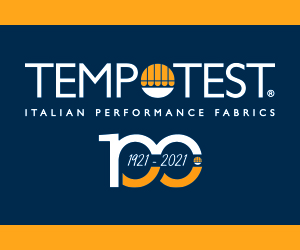Demand for Indian Hand Weavers Find New Markets
December 31, 1999
Bangalore, India — Despite the limitations of hand production, Indian handloom weavers are meeting the challenges of the global marketplace and beating the odds. According to the Handloom Exports Promotion Council (HEPC), an autonomous body engaged in promotion of Indian hand-woven textiles, the export of cotton handloom fabrics and made-ups from 1998-99 topped $490 million, with home furnishing products accounting for 90 percent of the exports. The important markets remain the U.S.A., Europe, Japan and Australia. Arun Gupta, Secretary and Development Commissioner for Handloom, Ministry of Textiles, Government of India attributes these numbers largely to a shift in consumer demand. He said that the long-time consumer trend toward hand-woven apparel has given way to demand for high-end, hand-woven home furnishings. The demand is particularly strong for exclusive, easy-care handwovens with style, colorfastness, and especially, machine-washability. The challenge for hand weavers now is to make age-old quality handwovens more marketable. Hence, the commercialization of traditional weaving has become the project of hundreds of cooperative societies and private enterprises, and of the Indian government itself. D. Sabitha, Executive Director cum Secretary, HEPC, Chennai, said that training classically trained weavers to meet the needs of changing global economy is exciting. "We want to transform the skills of weavers who were traditionally weaving high-quality saris so that they can produce exclusive home furnishings." The government has commissioned pilot weaving centers at various places to train weavers to understand the global consumer's taste and to produce exportable items. At these centers, traditional weavers are now augmenting their skills with a computer-aided textile design system on an IBM platform. This will allow exporters faster sampling, error-free manufacturing, and the capability to make custom products. A proposal has also been made to invest annually more than $1 million for publicity in international publications so that these home furnishing fabrics may enter international markets. Sabitha said the proposal would give manufacturers special financial assistance to ensure that their hand-woven furnishings products receive sufficient publicity in the global market. Gupta believes these efforts are noble. "Handloom weaving has no parallels. From time immemorial, it has been the creative aspect of textile decoration in terms of design, color and in short runs," he said. In the end, India hopes to improve the living standards of millions of Indian weavers, while producing exportable textiles. At Heimtextil, HEPC will present of a new weave aimed at the high end of the market. The design and colors feature special tribal motifs. The weave will be available in products for living, bath and kitchen, such as curtain drapes, cushion covers and upholstery products.
















